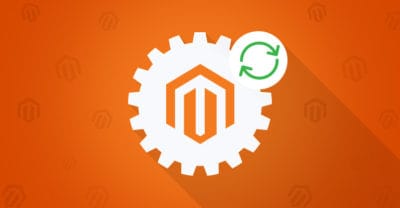
How to Drive Customer Loyalty and Reward Regulars at Your Fashion Web Store

New customers are hard to come by, and they’re also expensive. According to The Harvard Review, acquiring a new customer is anywhere from five to 25 times more expensive than retaining an existing one.
On the other hand, repeat customers are nine times more likely to convert than a first-time shopper. They also have a higher average order value than first-time buyers, so they have a higher lifetime value (as they’re expected to spend more over a longer period of time). The bottom line is, it makes sense to hang on to your loyal customers, and reward them.
Brands can reward their repeat customers in a number of different ways. Here are three tactics you can use to increase customer loyalty and keep regular customers returning to your fashion eCommerce website.
Develop a loyalty program
Loyalty programs are a form of gamification, or the application of game principles to non-game contexts (such as eCommerce) to motivate participation and reward long-term engagement. They were first popularized by grocery stores in the 1950s, who gave customers stamps every time they made a purchase. Since then theyhave evolved into sophisticated programs that not only improve customer retention, but also build community and drive sales online.
Loyalty programs can offer all kinds of different rewards to repeat shoppers and can be set up in a number of different ways.Your loyalty program could be as simple as offering a discount on any customer’s second purchase, or after a certain dollar amount in purchases. You could also implement a points system, where a customer must accrue points assigned to dollar values and get rewarded once they reach a certain threshold of points. Or you could offer access to exclusive merchandise or services.
Some brands are now adding gamification to their rewards programs in the form of animated interactive spinning wheels on their landing pages. Customers can click the wheel and “spin to win,” unlocking an offer such as a percentage discount or free shipping.
Create a referral program
Referral programs are another form of gamification, where your loyal customers send people to your eCommerce store to purchase and/or sign up and, in return, they are rewarded. The referrals can be your customer’s friends and family (“refer a friend”), or people they don’t know personally but that they’re connected with on social media.
These programs work well because people are likely to recommend brands they’re loyal customers of anyway, so a referral program incentivizes them to do so—hopefully with added frequency and enthusiasm.
Referral programs are sometimes called the “digital marketing dark horse” because of their lower level of use. A Gigaom survey found that only 39% of marketers use referral marketing regularly, yet 43% of companies that use referral marketing consistently acquire more than 35% of their new customers with it.
You can implement a referral program that either rewards only your customer providing the referrals, or both the existing customer and the new customer. However, the more incentive you provide, the more likely your program is to be successful. Rewards can come in the form of price discounts or points that accumulate toward those discounts. There are a number of platforms that can help you manage this, such as Talkable, ReferralCandy, Ambassador, SaaSquatch and Buyapowa.
Offer personalized discounts
Beyond traditional loyalty and referral programs, personalized discounts are another way to further engage and reward your valued customers, and there are a number of strategies for sharing these. You could utilize smart tags to show customers personalized discounts based on the categories they’re browsing on your website. Or reward your newsletter subscribers by including special deals that are only available to your subscribers. You could also reward your social media followers by offering special discounts only via these channels.
Discounts can also be sent more individually, via email and SMS marketing. For every customer that has an account or profile with your website, send out special discounts on their birthday. Or send special discounts on other special occasions, such as the anniversary of your store, or the anniversary of your customer’s account creation or first purchase.
Conclusion
As you can see, there are numerous strategies for engaging and rewarding your most valued repeat shoppers. All of them build on your community and increase engagement by rewarding customers that are loyal to your brand. Whichever tactic you choose, make sure that it’s not too complex and difficult for customers to understand, otherwise they’ll be less likely to engage with it. Make rewards easy to redeem, and ensure that the value is there so that customers will want to use them. We can help you to retain and reward your loyal customers—reach out to us for help with strategizing and implementing a loyalty program today.












